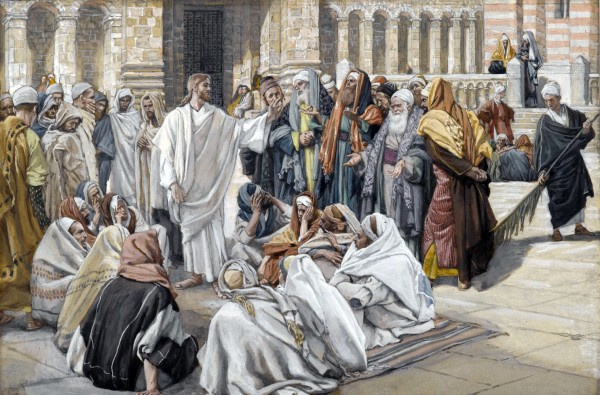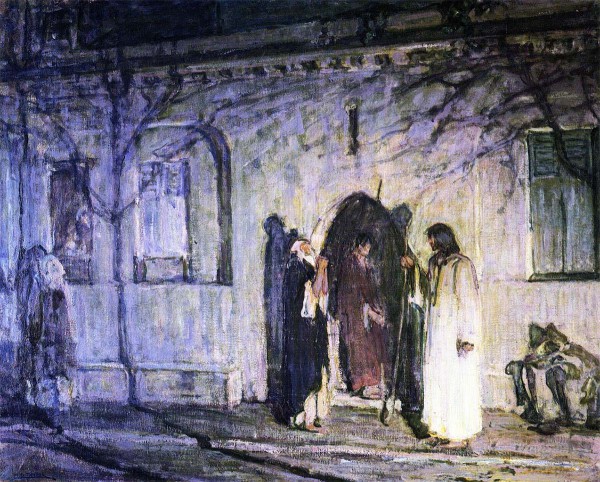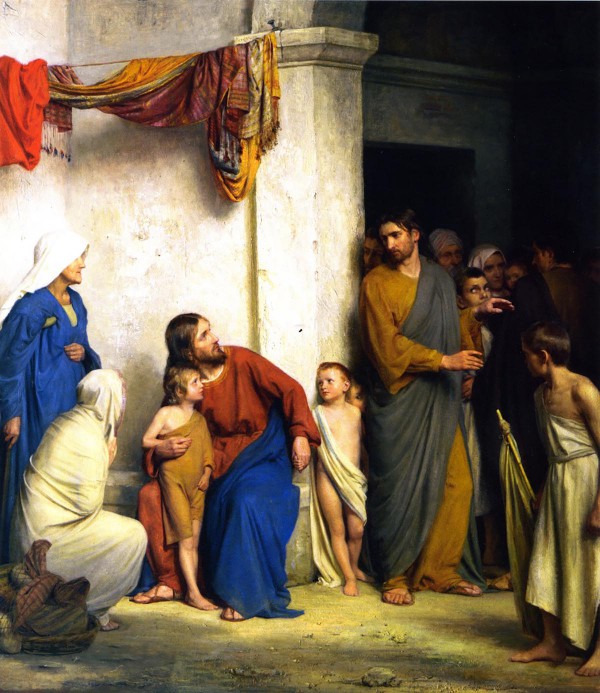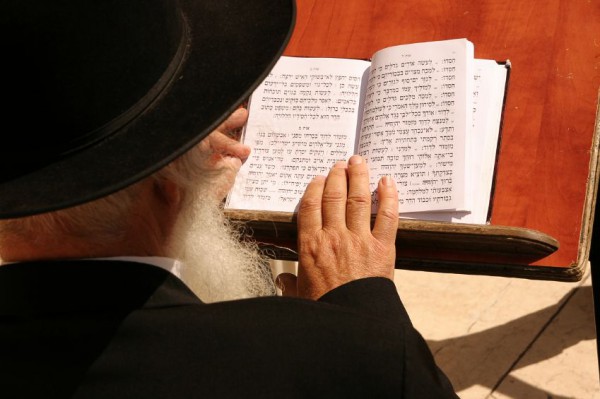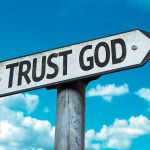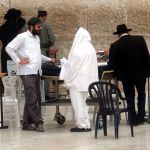“Is God the God of Jews only? Is He not the God of Gentiles too? Yes, of Gentiles too.” (Romans 3:29)
We read a lot about the Canaanites in the Bible, but not much is reported on how they are impacting the people of Israel today in these end times.
And nothing is said in mainline media about the true solution to the tension and terror that still exists between these two people groups.
Let’s look at these issues and how we can bring true peace to these spiritually and physically oppressed people and neighbors.
Phoenicians, Philistines, or Arabs?
Who are the Canaanites?
Their saga begins with Noah.
While Noah’s son Shem fathered Abraham, Isaac, and the Hebrew People, Noah’s son Ham fathered Canaan. Canaan fathered the Canaanites, Amorites, Hitites, Jebusites, and a few other “ites” we read about in the Bible.
Canaanites are not to be confused with Philistines.
The Philistines originated in the Aegean isles and inhabited the coastal plain of Israel in the south from Gaza to Ashdod.
Canaanites are also not Arabs.
The Arab people were fathered by Abraham’s son Ishmael, by Abraham’s other wife Keturah, and through Abraham’s nephew, Lot.
Canaanites are Phoenicians.
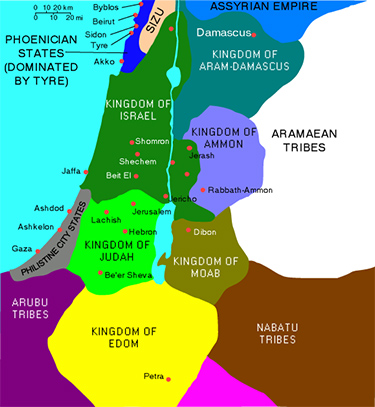
Map depicting the location of the Canaanites (Phoenicians) as well as Judah, Israel, Philistines, Arab nations and other tribes in 830 BC.
The Greeks gave them this name because of their famous royal purple dye, known in Greek as phoinikes.
So, the Canaanites are a distinct people group who can trace their lineage to Noah through his son Ham.
We read in Genesis 9:8 that Canaan’s brothers received a blessing from God, and Canaan may or may not have been present at the time. However, Canaan did receive curses that have plagued his people.
The Double Curse of Canaan
Canaan received at least two curses in his life.
The first curse came from Noah after Ham sinned against him (Genesis 9:20-24).
“Cursed be Canaan; a servant of servants shall he be to his brothers.” (Genesis 9:25)
The second curse came from Ham and Canaan’s brothers.
In the book of Jubilees (read by Ethiopian Jews as part of the Ethiopian Orthodox Bible), we are told that Noah’s family received a land inheritance.
Canaan, however, decided to take portions of Shem’s land, including Hamath in west-central Syria today, down to the entrance of Egypt (Jubilees 10:27–28; Numbers 34:6–7).
Ham and his other sons pleaded with Canaan not to do it:
“Dwell not in the dwelling of Shem; for to Shem and to his sons did it come by their lot. Cursed art thou, and cursed shalt thou be beyond all the sons of Noah.” (Jubilees 10:31–33)
Canaan didn’t listen. He remained in the land promised to the people of his Uncle Shem.
As Joshua crossed the Jordan River into Canaan with two million Hebrew people, the Canaanites encountered the God of their ancestor Noah.
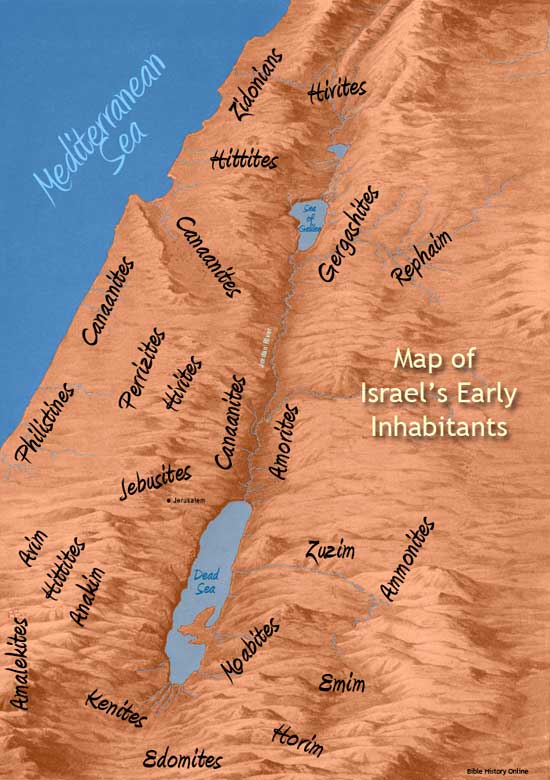
Map of Israel’s early inhabitants, including the Canaanites and their descendants. (Source: Bible History Online)
A Holy War
Perhaps nothing has made the God of Abraham, Isaac, and Jacob more misunderstood than His decree to completely remove the Canaanites from the land of Canaan when the Hebrew People took possession of it.
“In the cities of these peoples that the LORD your God is giving you for an inheritance, you shall save alive nothing that breathes, but you shall devote them to complete destruction, the Hittites and the Amorites, the Canaanites and the Perizzites, the Hivites and the Jebusites, as the LORD your God has commanded.” (Deuteronomy 20:16–17)
Why would a holy God declare such a thing? He said,
“That they may not teach you to do according to all their abominable practices that they have done for their gods, and so you sin against the LORD your God.” (v. 18)
If the Canaanites shared God’s standards of good and evil, then perhaps God would have worked out a more amicable agreement.
But the Canaanites did not share God’s values. And the Hebrew People did not fully obey God’s instructions.

Abram’s Journey from Ur to Canaan (1850, by Jozsef Molna. In the extra-Biblical book of Jasher, we are told that Abraham’s father was a prince of Babylon’s King Nimrod, yet Abraham obeyed God’s instructions to leave Babylon and worship Him alone. And God greatly blessed him.
Joshua and other leaders of Israel allowed some Canaanites to survive, enslaving them or controlling them in other ways (Judges 1:27–36).
As the saying goes, “You are known by the company you keep.”
Because they remained in the land, it did not take long for the People of Israel to begin acting like Canaanites, worshipping Baal, Asherah, and other gods of Egypt, Assyria, and Babylon with “sacred perversions,” like child sacrifice (Jeremiah 7:31, 19:2–6).
In worship, the Canaanites also planted wooden poles or trees (the King James Bible says “groves”) called Asherah, named after the mother of Baal, who is also the mistress of Baal and the goddess of fertility.
Likewise, in the Holy Temple of Jerusalem, where God placed His name forever, the Israeli king Manasseh placed a carved image of Asherah. There and throughout the land, the people of Judah, even the priests, engaged in these cult sex acts (1 Kings 14:23–24; 2 Kings 21:7).
God had chosen the Hebrew People to be a light to the nations, set apart, holy. They were to bring others to the knowledge of the one true Provider of everything the world needs.
“You shall be holy to Me, for I the LORD am holy and have separated you from the peoples, that you should be Mine.” (Leviticus 20:26)
But His People couldn’t resist the seductive yet false idea that other gods like Baal and Asherah had the divine ability to produce good harvests for them.

The Baal stele (right) was discovered in 1932 in Ugarit, Syria about 20 metres (66 feet) from the Temple of Baal. As this Canaanite god was believed to be a god of storm and rain, he is depicted holding a thunderbolt. The bronze of baal (left) was also found in ancient Ugarit.
Perhaps to hedge their bets against a God they could no longer see, the Israelites trusted in statues, poles, and groves. While worshipiing false gods, they also practiced deceit, greed, and licentiousness with each other.
By the time Isaiah prophesied against them in the 8th century BC, these detestable practices were firmly entrenched in Israeli society. And God was not pleased. He said,
“I spread out my hands all the day to a rebellious people, who walk in a way that is not good, following their own devices; a people who provoke me to my face continually, sacrificing in gardens and making offerings on bricks; who sit in tombs, and spend the night in secret places; who eat pig’s flesh, and broth of tainted meat is in their vessels; who say, ‘Keep to yourself, do not come near me, for I am too holy for you.’ These are a smoke in my nostrils, a fire that burns all the day.”
Not only did the Israeli People suffer exile for defiling their holy purpose, they have continuously lived in strife with their Canaanite neighbors, indeed the world.

Silhoutte of Sidon skyline with flag of Lebanon in the background. Sidon is named after Canaan’s firstborn son, Sidon.
Where Are the Canaanites Today?
A study published in the American Journal of Human Genetics on July 27, 2017 gives us a clue as to where the Canaanite bloodline dwells today.
The DNA of five Canaanites buried nearly 4,000 years ago in Sidon of ancient Lebanon were sequenced and compared with the DNA of 99 Lebanese people.
A 93% match indicates that the Canaanite people stayed intact through the millenia in Lebanon, a portion of the land they occupied since the time of Canaan.
The other 7% of the DNA accounts for a Eurasian migration to the region between 1800 and 200 BC.
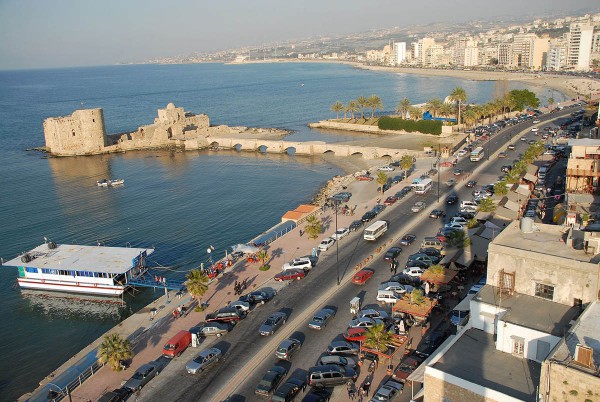
Modern Sidon, Lebanon with a 13th century Crusader sea castle built on an island that once housed a Temple to the guardian god Melqart, or Ba‘l Ṣūr, “Lord of Tyre.”
Not only did the Canaanite physical DNA survive but let’s look at some striking similarities in their “spiritual DNA” with the inhabitants of Lebanon.
Thankfully, the Lebanese people don’t practice child sacrifice in pits of fire, yet the terror group Hezbollah (the military arm of Lebanon), has stockpiled rockets and ammunition among schools and villages, making their children living sacrificial targets for a radical regime that seeks to destroy Israel.
Thankfully, Lebanese don’t practice sacred sex rituals to Asherah, but Hezbollah does approve short term marriages with Lebanese women, known as mut’a (an Arabic word that means temporary enjoyment, pleasure, delight).
And thankfully, the Lebanese don’t worship Baal, but they do worship Allah, who emphatically states that “God has no Son.”
Such radical ideology against the values of God requires a radical intervention by the Son of God Himself, who says:
“I am the way and the truth and the life. No one comes to the Father except through Me.” (John 14:6)
Radical Peace through Yeshua
Only one Person can release the spiritual and physical oppression over the Lebanese people and give them a peace that surpasses all understanding.
Yeshua (Jesus) did this for a Canaanite woman and her daughter before He “left the region of Tyre and went through Sidon.” (Mark 7:31)
In Tyre, the Canaanite woman bowed down before Him and begged Him to cast a demon out of her daughter.
At first, it seemed as if Yeshua utterly rejected her:
“Let the children be fed first, for it is not fair to take the children’s food and throw it to the dogs.” But she answered Him, “Sir, even the dogs under the table eat the children’s crumbs.” (Mark 7:27–28)
Why did Yeshua, the Sar Shalom (Prince of Peace), give this woman such a hard time? He simply wanted her to express the condition of her heart, for Yeshua had just finished teaching that “it is from within, from the human heart, that evil intentions come.” (Mark 7:20–21)
In bowing to Him, she revealed her heart’s humility.
In asking for even a crumb of His Divine food, she displayed her great trust in Him as the Bread of Life.
In referring to herself as a dog, she understood that as a Canaanite, she did not naturally deserve anything from the God of Abraham, Isaac, and Jacob, yet she persistently and earnestly sought the Divine intervention of His Son, Yeshua.
After revealing her faith and trust in Yeshua’s divine identity, He restored her daughter’s peace:
“For saying that, you may go—the demon has left your daughter.” (v. 29)
In performing this miracle for a Canaanite woman, Yeshua proved that He does not offer His Divine peace to any one ethnicity or gender—He offers Himself to anyone who trusts in Him.
“For it is by believing in your heart that you are made right with God, and it is by confessing with your mouth that you are saved.” (Romans 10:10)
This is Good News for the Lebanese people today, indeed, the entire world.
The spiritual and demonic oppression that has brought such misery to the people of Lebanon through the curses of their ancestor, Canaan, and their ungodly religious practices can be overcome.
They can love their neighbors and live in true, eternal peace. This is God’s heart.
“The Scriptures looked forward to this time when God would declare the Gentiles to be righteous because of their faith. God proclaimed this good news to Abraham long ago when He said, ‘All nations will be blessed through you.'” (Galatians 3:8)
But they have closed their hearts to the God of Israel and His Son Yeshua—His ways, His truth, His life.
Likewise, the majority of Jewish People do not believe that Yeshua is the promised Messiah, hardening their hearts to Him and the many prophecies that speak of Him.
The Messianic Prophecy Bible that we are developing will help Jewish, Arab, and all non-Believers see the many prophetic accounts, declarations, types, shadows, and allusions in Scripture that reveal the identity of Yeshua as Messiah.
We pray that after learning of these prophecies, readers will earnestly ask the God of Israel, “Who do these prophecies point to?”
When they sincerely seek Him, Yeshua will reveal Himself in ways that are profoundly personal and undeniable.
Moreover, we pray that Israel’s Muslim neighbors will come to know Him as well, and true peace in Israel, Lebanon and the entire world will one day be a reality.





